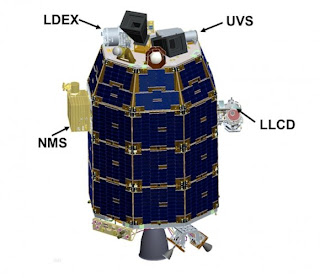NASA launches robotic explorer to moon

NASA’s newest robotic explorer rocketed into space in an
unprecedented moonshot from Virginia that dazzled sky watchers along the
East Coast of the U.S.
LADEE, which is the size of a small car, is expected to reach the moon on Oct. 6.
Scientists want to learn the composition of the moon’s
ever-so-delicate atmosphere and how it might change over time. Another
puzzle, dating back decades, is whether dust actually levitates from the
lunar surface.
The $280 million moon-orbiting mission will last six months and end with a suicide plunge into the moon for LADEE. The 844-pound (380-kilogram) spacecraft has three
science instruments as well as laser communication test equipment that
could revolutionize data relay. NASA hopes to eventually replace its
traditional radio systems with laser communications, which would mean
faster bandwidth using significantly less power and smaller devices.
“There’s no question that as we send humans farther out
into the solar system, certainly to Mars,” that laser communications
will be needed to send high-definition and 3-D video, said NASA’s
science mission chief, John Grunsfeld, a former astronaut who worked on
the Hubble Space Telescope.


